Are you looking to fill your garden with vibrant, nutrient-packed leafy greens this fall? Look no further! In this article, we have curated a list of twelve incredible leafy green vegetables that you can easily plant in September for a bountiful harvest.
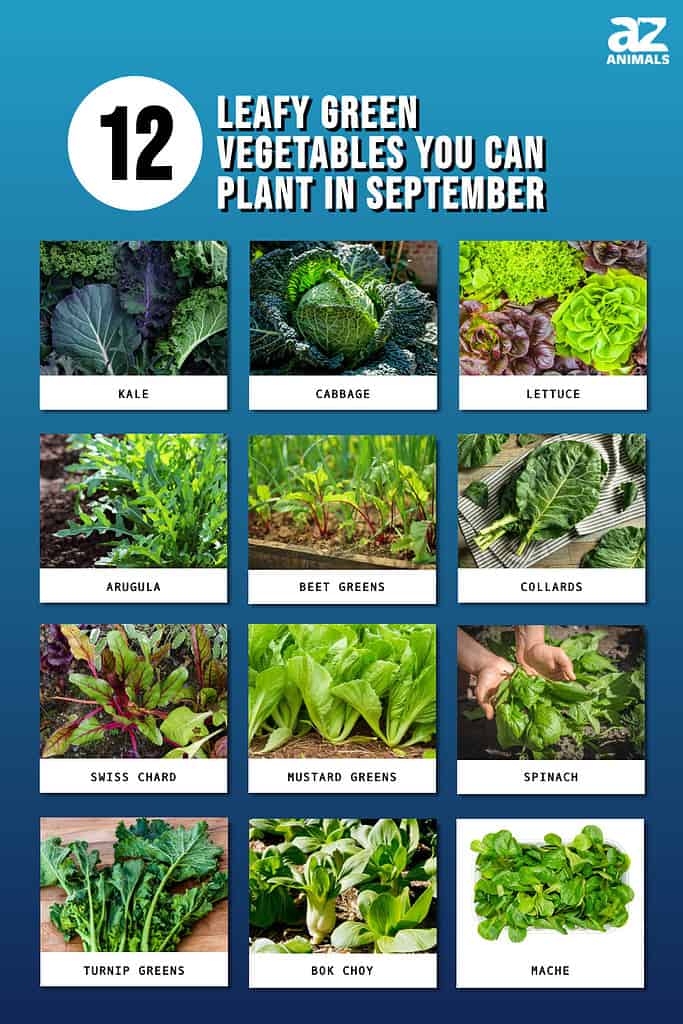
September in the Garden
September marks the end of summer and the beginning of autumn. There are many leafy greens you can plant in September, but there are also certain garden chores that must be done in order to ensure a healthy garden come spring.
First, it is important to start preparing the garden for the cooler months ahead. This includes clearing dead leaves and plants, pruning any overgrown shrubs and trees, and removing weeds.
Second, it is time to fertilize the soil in order to provide essential nutrients to plants. This can be done by applying a balanced fertilizer, such as a 10-10-10 blend.
Third, it is important to aerate the soil to provide plants with oxygen and help their roots to penetrate the soil. This can be done by using a digging fork to loosen the soil.
Fourth, it is important to winterize garden tools in order to keep them in good condition. This includes sharpening blades, lubricating moving parts, and cleaning tools.
Finally, it is important to mulch the garden to protect plants from cold weather. This can be done by adding a layer of organic material, such as leaves or compost, around the base of plants.
12 Amazing Leafy Green Vegetables You Can Plant in September
If you start your garden in September or October, you’ll be able to enjoy two full seasons of plants from your kitchen garden before the spring arrives. Regardless of the climate you live in, there are plenty of leafy greens you can plant and harvest to eat over the upcoming months. Here are our favorites.
1. Kale

There are a few types of kale. They are one of the best leafy greens that you can plant in September.
©iStock.com/Tetiana Kolubai
Kale is a leafy green vegetable that is part of the cabbage family. It has a distinct flavor and comes in various shapes and sizes, including curly kale, dinosaur (lacinato) kale, red Russian kale, and white Russian kale. Kale is packed with nutrients such as vitamins A, C, and K, folate, calcium, and iron. The hardiness of this plant makes it an ideal option for planting in fall or early winter when temperatures are cooler outside.
When planting kale, it is important to make sure the soil is well-draining and has plenty of organic matter. This will help keep the plant healthy and vigorous throughout its growing season. Additionally, mulch the garden to protect plants from cold weather. This can be done by adding a layer of organic material, such as leaves or compost, around the base of plants.
2. Cabbage
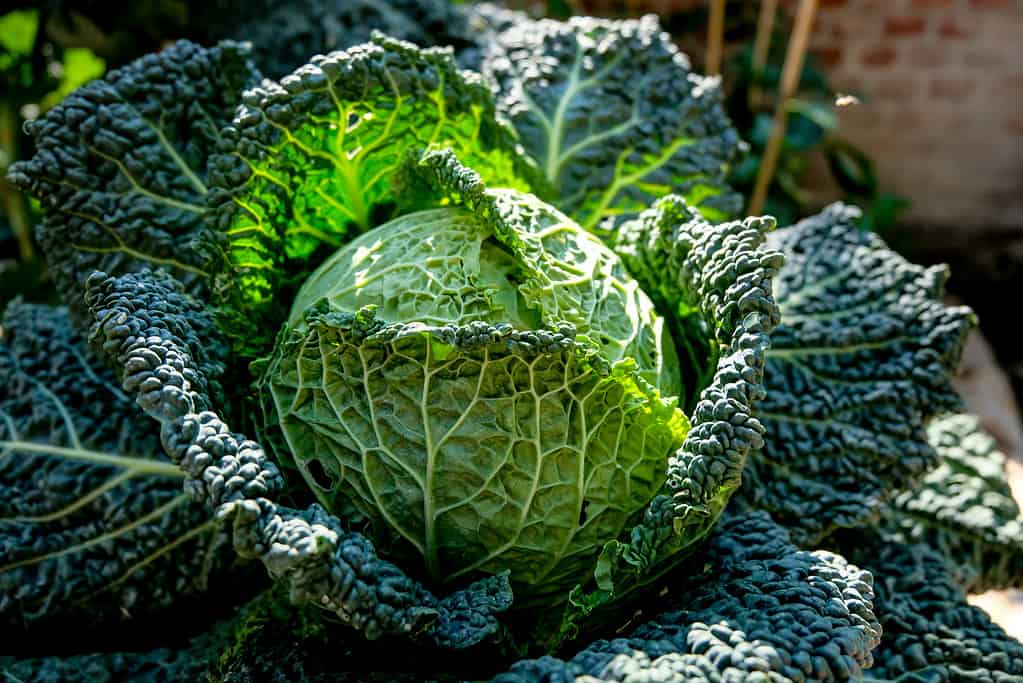
Savoy cabbage is an example of an ideal leafy green that you can plant in September.
©Vito Cangiulli/Shutterstock.com
Cabbage is a leafy green vegetable that belongs to the cruciferous family of vegetables. It has a mild flavor and comes in many varieties, including red cabbage, savoy cabbage, Napa cabbage, and Brussels sprouts. Cabbage provides an excellent source of nutrients such as vitamin C, folate, potassium, magnesium, and fiber.
When planting this cool-season crop in the fall garden, it’s important to choose an area with well-draining soil and full sun. Plant cabbage 6-8 weeks before the first expected frost of the season, and be sure to space them 12 inches apart. Regular watering is necessary to keep plants healthy and productive but avoid overwatering as this can cause heads to rot. Adding a layer of organic mulch around the base of plants will help protect against cold temperatures and conserve moisture in the soil.
3. Lettuce

Lettuce prefers cool weather, making a perfect leafy green to plant in September.
©iStock.com/DutchScenery
A member of the Asteraceae family, lettuce is a leafy green vegetable that you can plant in September. It has a mild flavor and comes in many varieties, including butterhead, romaine, crisphead, and looseleaf. It’s rich in nutrients such as vitamins A, C, K, manganese, and calcium. Lettuce also provides an excellent source of dietary fiber, which helps to promote healthy digestion.
When planting this cool-season crop in the fall garden, choose an area with well-draining soil and full sun. Plant lettuce 6-8 weeks before the first expected frost of the season, and be sure to space them 6 inches apart. Regular watering is necessary to keep plants healthy and productive but avoid overwatering. Cut-and-come-again types of lettuce make great leafy greens to plant in September.
4. Arugula

Rocket, or arugula, is a great source of vitamins and fiber.
©vaivirga/Shutterstock.com
Arugula, also known as rocket or roquette, is a leafy green vegetable that offers a unique peppery flavor. This cool-season crop grows best in cooler temperatures and can be planted 6 to 8 weeks before the first frost of the season. It’s an excellent source of vitamins A, C, K, and folate, as well as magnesium.
Arugula is fairly easy to grow from seed or transplants in full sun with well-draining soil. It’s also a great choice for fall gardens, as it can tolerate some light frost. Arugula is an excellent source of dietary fiber, which helps to promote healthy digestion and can be harvested in just 30-50 days after planting. For best results, cut leaves from the base when they are young and tender for salads or add them to stir fries or soups later in the season.
5. Beet Greens
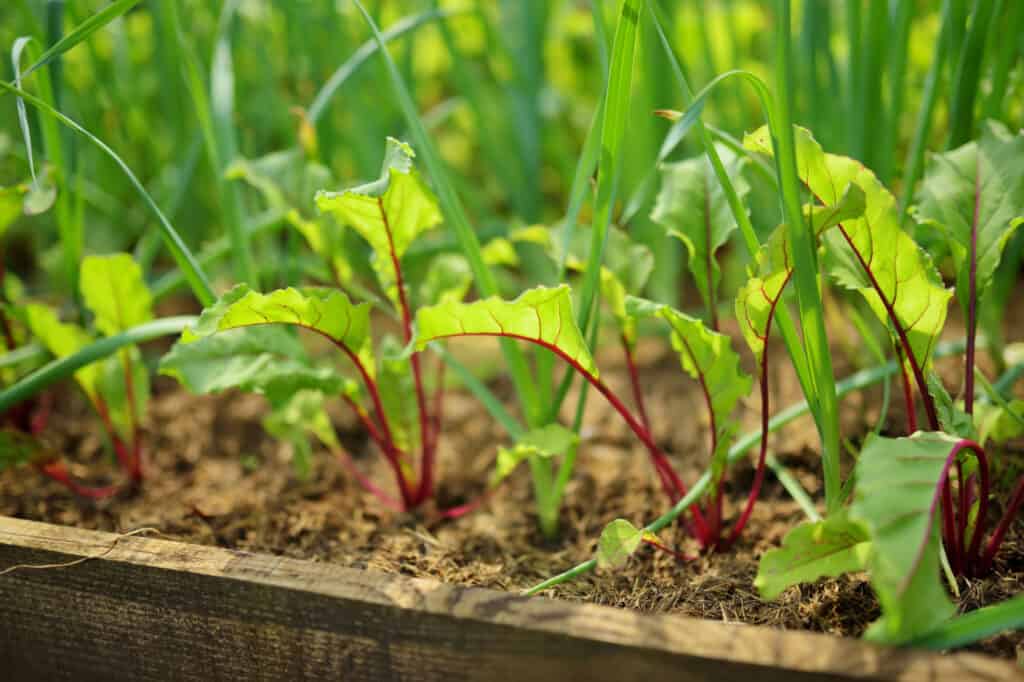
Some people believe that the above-ground, leafy greens of beets are the best part!
©MNStudio/Shutterstock.com
Beet greens are the edible leaves of the beet plant. They have a mild, earthy flavor and offer an excellent source of dietary fiber, iron, vitamins K and B6, and potassium. Beet greens can be eaten raw in salads or cooked like spinach or chard. When cooked, they take on a sweet, nutty flavor that pairs well with citrus dressings or balsamic vinegar.
Beets are easy to grow from seed in full sun with rich soil and regular watering. You can harvest the tender leaves as soon as they reach 4-6 inches in height and will continue to produce until the beet bulbs are ready to harvest. For best results, pick individual leaves from ground level.
6. Collards
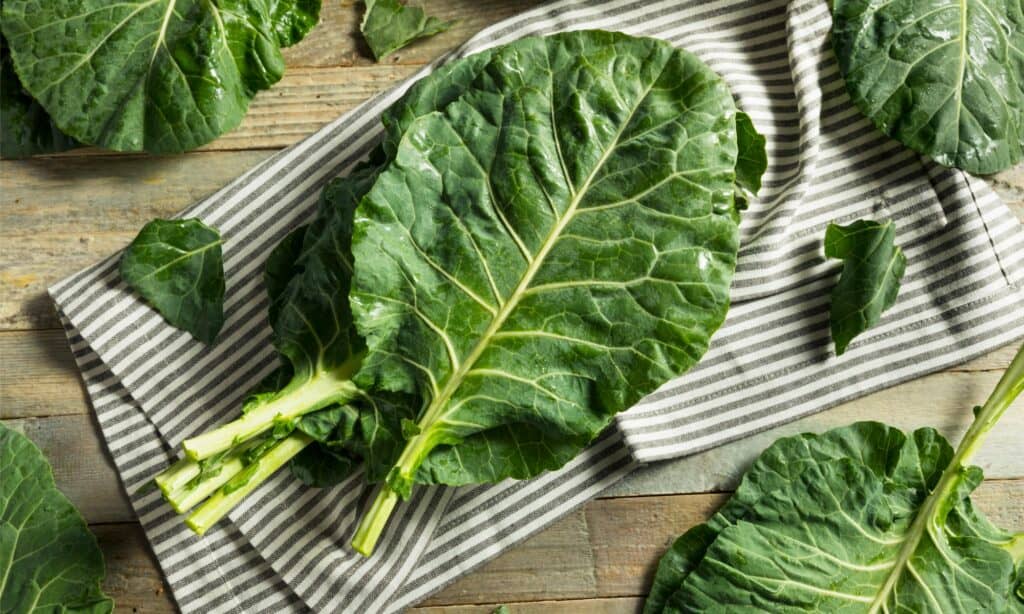
You can harvest collard greens, when they are small or large, for various uses.
©iStock.com/bhofack2
Collard greens are a type of leafy green vegetable that belongs to the same family as kale and cabbage. They have large, dark green leaves with tough stems and a slightly bitter taste. Collards are high in vitamins A, C, and K, as well as dietary fiber and calcium. They can be eaten raw in salads or cooked like spinach or chard for use in stir-fries, soups, casseroles, and other dishes.
Collards are an excellent leafy green to plant in September because they prefer cool weather and can tolerate light frost. They also thrive in full sun with rich soil and regular watering. When harvesting, it’s best to pick leaves when young. However, the larger leaves make great wraps and burritos. Collards will continue to produce until temperatures drop below freezing or when there is an extended period of cold weather.
7. Swiss Chard

If you are looking for a leafy green that you can plant in September, consider Swiss chard.
©quiggyt4/Shutterstock.com
Swiss chard is a leafy green vegetable that belongs to the same family as spinach and beets. It has broad, glossy leaves in shades of red, yellow, or white with thick stalks. The flavor of Swiss chard is slightly sweet and earthy, with hints of grassiness. It can be eaten raw in salads or cooked like spinach for use in soups, stir-fries, casseroles, and other dishes.
Swiss chard is an excellent choice of leafy green to plant in September because it can tolerate light frost and prefers cool weather. It thrives in full sun with rich soil, regular watering, and occasional fertilizing. When harvesting Swiss chard, you should pick the leaves when young for a mild flavor. The mature leaves are edible but tend to be tougher and more bitter-tasting than the younger ones.
8. Mustard Greens
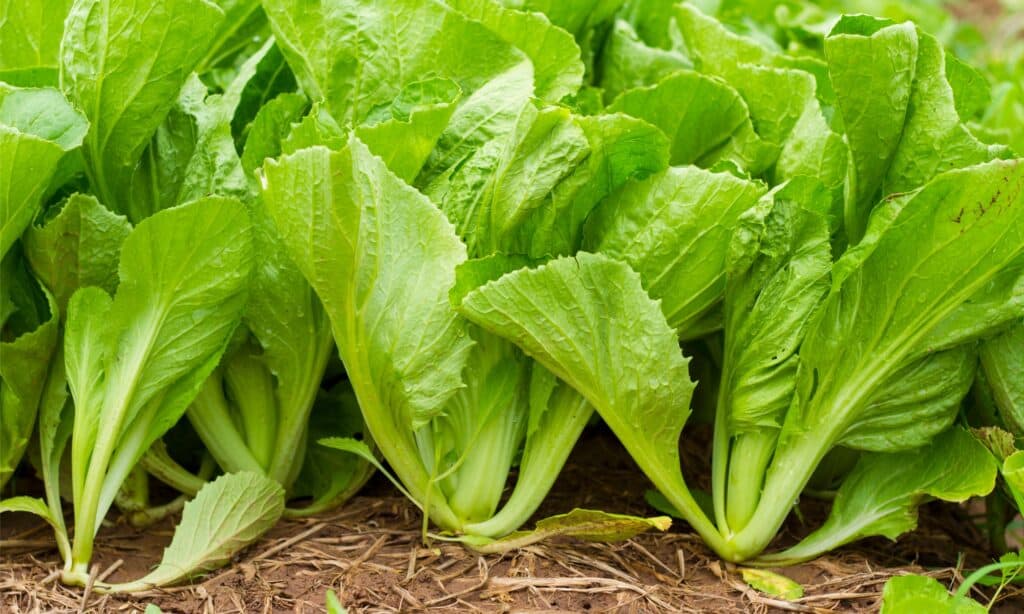
The leaves of mustard greens actually get tastier in cooler weather.
©iStock.com/trangiap
Mustard greens are a leafy green vegetable that belongs to the same family as cabbage and kale. It has bright, yellow-green leaves with thick stalks and a pungent flavor similar to mustard or horseradish. The taste of mustard greens is bitter when eaten raw but mellows out when cooked in soups, stir-fries, casseroles, or other dishes.
Mustard greens make an excellent choice of leafy green to plant in September because they thrive in cooler weather and will tolerate temperatures down to 20°F. They prefer full sun and should be planted in soil that is rich in organic matter and well-drained. Mustard greens are fast-growing, so you can harvest them quickly after planting them for a tasty addition to your meals.
9. Spinach
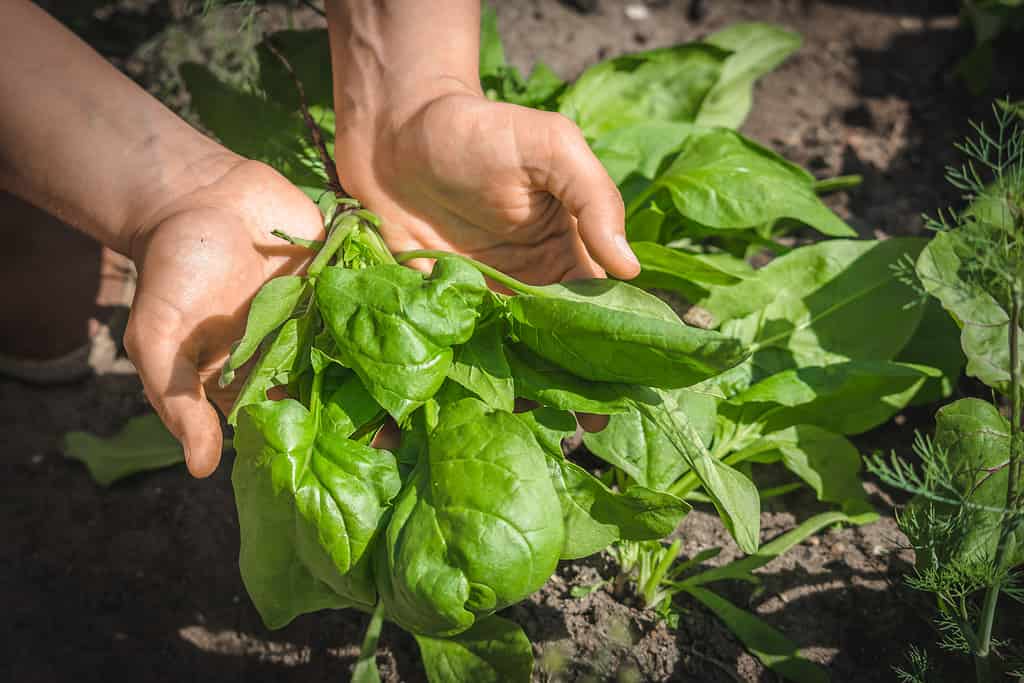
If you are looking for a very easy leafy green that you can plant in September, spinach may be for you.
©alicja neumiler/Shutterstock.com
Spinach is a leafy green vegetable that belongs to the Amaranth family. It has dark green, arrow-shaped leaves and a mild flavor. Spinach can be eaten raw or cooked and is very versatile in the kitchen. It’s also nutrient-packed, providing vitamins C and K as well as iron and calcium.
When planting spinach in September, you should look for varieties of this vegetable that are best suited for cooler weather since it will not tolerate extreme heat. Spinach should be planted in well-drained soil and full sun or partial shade. It is a relatively fast-growing vegetable, so you can expect to harvest it within a month of planting. Fresh spinach makes an excellent addition to salads, sandwiches, casseroles, soups, and other recipes for extra flavor and nutrition.
10. Turnip Greens
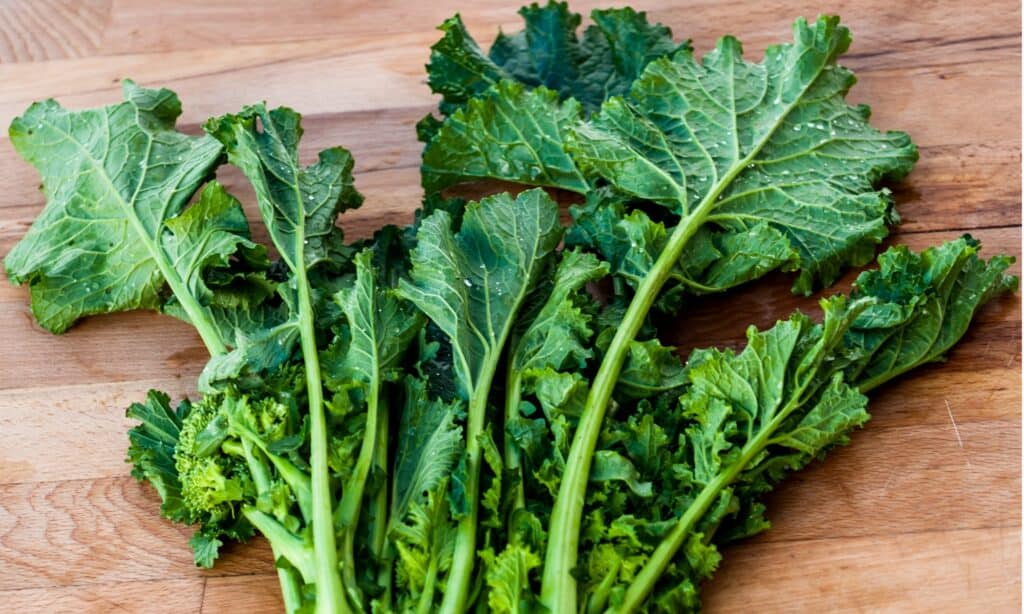
If you need fiber and vitamins, throw some turnip greens into your smoothies.
©iStock.com/peuceta
Turnip greens are the edible leaves of the turnip plant, which is a root vegetable. They have dark green, crinkly leaves that are similar in appearance to spinach or kale and have a slightly bitter flavor. Turnip greens can be eaten cooked or raw and make an excellent addition to salads, stir-fries, soups, stews, and other dishes for extra flavor.
Nutritionally speaking, turnip greens are rich in vitamin K as well as calcium and phosphorus. They are also a good source of dietary fiber, making them an excellent choice for those looking to improve their overall health. Planting turnip greens in September is best done in full sun or partial shade with soil that drains well. The turnip plant is fast-growing, so you can expect to harvest the leaves within just 30-40 days of planting!
11. Bok Choy
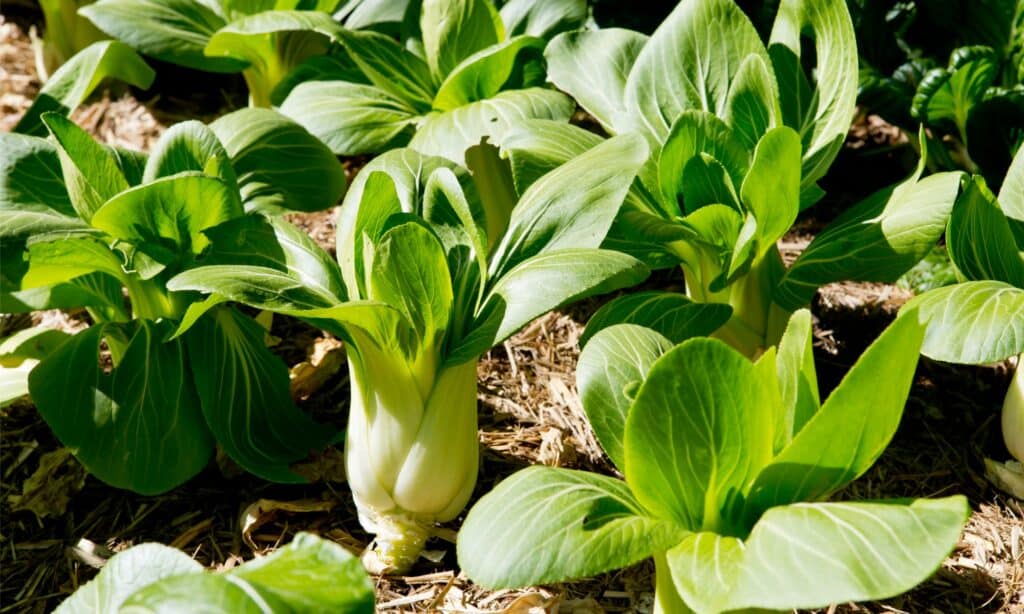
Plants that don’t mind a mild frost, like bok choy, are great leafy greens to plant in September.
©iStock.com/CreativeFire
Bok choy (also known as pak choi or Chinese cabbage) is a type of leafy green vegetable that is popular in Chinese cooking. It has a mild taste and crunchy texture, making it an excellent addition to stir-fries, salads, soups, and other dishes. Nutritionally speaking, bok choy is packed with vitamins K and C, as well as calcium and fiber.
Planting bok choy in September is best done in cooler climates where temperatures remain mild. Choose a spot in full sun or partial shade with well-drained soil for best results. Plant the seeds about 1/2 inch deep and water regularly to keep them moist until they sprout. Harvesting can begin after just 30 days, so you can soon be enjoying fresh, crunchy bok choy leaves!
12. Mache
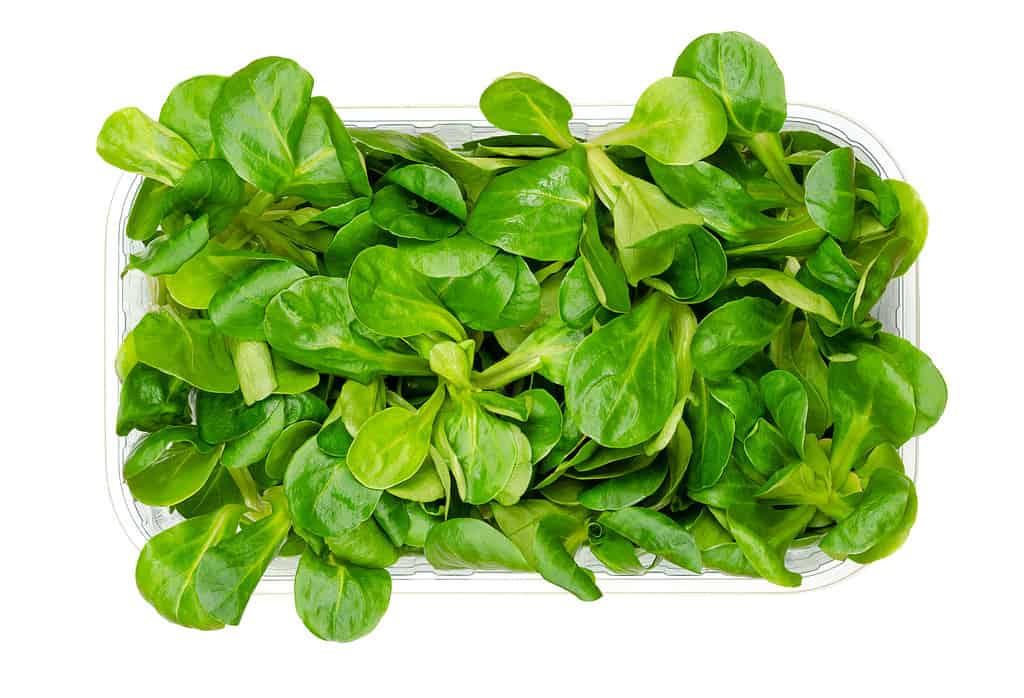
Lambs’ lettuce (mache) has many names. People call it common cornsalad, nut lettuce, or field salad.
©PeterHermesFurian/iStock via Getty Images
Mache (also known as corn salad) is a type of leafy green vegetable that you can plant in September. It has a delicate, nutty flavor. It is popular in salads and other dishes and also makes an excellent garnish. Nutritionally speaking, mache is high in vitamins B6, A and C. It also contains a lot of potassium, iron, and copper.
Planting mache in September allows it to mature slowly throughout the cooler season without bolting or going to seed prematurely. Choose a spot for your mache where it will receive full sun or partial shade and has well-drained soil. Plant the seeds about 1/4 inch deep and water them regularly to keep them moist until they sprout. You can start harvesting mache leaves after just 40 days, so you can soon be enjoying fresh, nutty-flavored mache!
Summary of 12 Amazing Leafy Green Vegetables You Can Plant in September
| Number | Vegetable |
|---|---|
| 1 | Kale |
| 2 | Cabbage |
| 3 | Lettuce |
| 4 | Arugula |
| 5 | Beet Greens |
| 6 | Collards |
| 7 | Swiss Chard |
| 8 | Mustard Greens |
| 9 | Spinach |
| 10 | Turnip Greens |
| 11 | Bok Choy |
| 12 | Mache |
The photo featured at the top of this post is © A-Z-Animals.com/
Thank you for reading! Have some feedback for us? Contact the AZ Animals editorial team.







